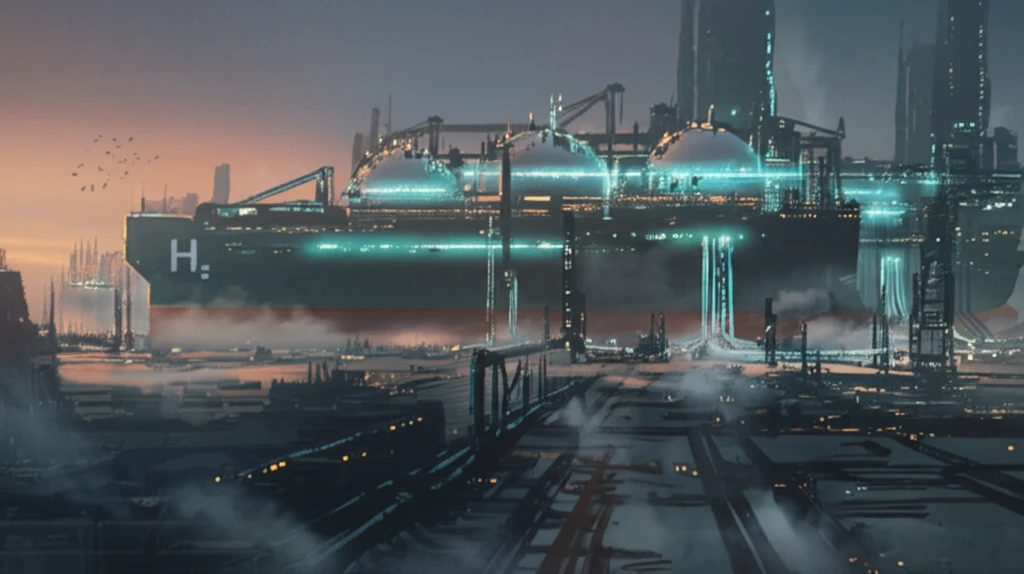
Will Shipyard Bottlenecks Sink the Hydrogen Economy? Navigating the Future of Clean Energy Transport
"A new study reveals that shipyard capacity could be a major hurdle in the global hydrogen revolution. Is liquefied ammonia the surprising solution?"
The push to decarbonize the global energy system is creating a massive surge in demand for renewable energy technologies. However, the most cost-effective renewable energy sources aren't always located near the world's biggest energy consumers. This geographical mismatch creates a need for efficient and reliable transportation of low-carbon energy carriers, with hydrogen and ammonia emerging as frontrunners.
Maritime transport is poised to play a pivotal role in bridging this gap, ferrying clean energy across oceans. But a critical question remains: do existing shipyards have the capacity to build the specialized vessels needed for a global hydrogen economy? A recent study dives deep into this issue, assessing global shipyard capabilities against projected hydrogen demand.
The research highlights potential bottlenecks that could hinder the widespread adoption of hydrogen as a fuel source. The study doesn't just point out problems; it also explores potential solutions, including increasing local hydrogen production, utilizing pipelines, and leveraging liquefied ammonia as an alternative energy carrier. The findings offer a crucial roadmap for navigating the challenges of scaling up maritime hydrogen transport and ensuring a smooth transition to a cleaner energy future.
The Looming Shipyard Bottleneck: Are We Prepared?

The study reveals a concerning possibility: a significant bottleneck in hydrogen transport capacity could emerge between 2033 and 2039 if the world relies solely on liquefied hydrogen (LH2). This bottleneck stems from limitations in global shipyard capacity, meaning there simply aren't enough shipyards equipped to build the specialized LH2 tankers needed to meet projected demand. This looming crisis demands proactive solutions to avoid derailing the hydrogen economy.
- East Asia Dominance: A significant portion of suitable shipyards are concentrated in East Asia, raising concerns about geographical diversification and potential geopolitical risks.
- Capacity Crunch: There's a potential transport bottleneck until 2033-2039, depending on the specific scenario.
- Millions of Cubic Meters Short: In 2035 alone, there could be a lack of up to 53 million cubic meters of transport capacity.
- Competition from Container Vessels: Rising demand for container vessels could further strain shipyard capacity, hindering the maritime hydrogen transport sector.
Charting a Course for a Hydrogen-Powered Future
The transition to a hydrogen economy is not without its challenges. This study serves as a crucial reminder that shipyard capacity is a critical factor that needs to be addressed proactively. By diversifying hydrogen transport methods, investing in shipyard expansion, and strategically utilizing alternative energy carriers like liquefied ammonia, the world can overcome these potential bottlenecks and pave the way for a sustainable, hydrogen-powered future.
